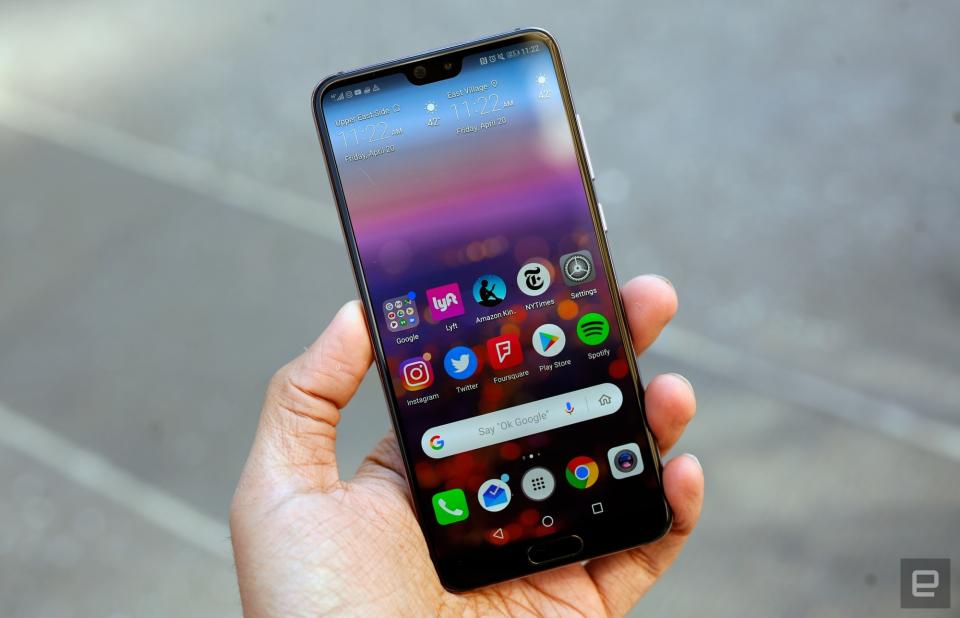Huawei P20 Pro review: The best phone you'll never buy
It's not just ambitious, it's audacious.
For the past few months, Huawei has been making headlines for all the wrong reasons — the US government warned against buying the company's phones, which led to the breakdown of near-final deals with AT&T and Verizon. Then Best Buy, one of its few US retail partners, backed away too. We're not sure if the concerns hold any weight, but one thing is clear: It sucks to be Huawei right now. And in the midst of that turmoil, Huawei revealed its new P20 Pro, a remarkably well-built device with a triple camera system and loads of style. I doubt that would ever win over a Sinophobic bureaucrat though, so there's a strong chance no one in the US will ever be able to walk into a store and buy one. That's a shame because after using it as my daily driver for a while, I'm convinced it's one of Huawei's all-time best, and one of the year's great Android phones. Huawei's build-quality has been top notch for some time now — just look at last year's P10 and the more recent Mate 10s. I'd argue style is just as important as overall build, though, and in that respect, the P20 Pro sits in a league of its own. No phone we've tested this year has turned as many heads on the streets of New York City. And that's all because of the fantastic Twilight finish. (There are also black, blue and pink gold models if those are more your speed.) You can't exactly call it subtle, but the glossy blue and purple gradient is unlike anything else you'll find on a smartphone, and I don't know that I can give it up. That said, I've been using the P20 Pro for a few weeks and its body has started to pick up some pretty gnarly nicks. That's true of me and any phone with a mostly glass body, but what can I do? There's no phone that deserves to be obscured in a case less than this one. The P20 Pro's back might grab all the attention, but there's a lot going on up front, too. Huawei went with a 6.1-inch OLED screen that runs at 2240x1080 — for those of you keeping track, that's a 18.7:9 aspect ratio, which means the screen is a little more than twice as tall as it is wide. 18:9 screens are much more common, but the company's decision here has ensured two things. First, the phone never feels unwieldy or uncomfortable. And more important, that slice of extra space up top offers some flexibility when it comes to the notch. Yeah, yeah, the notch. Going off everything we've seen so far, it seems safe to call 2018 the year of the notched smartphone screen. The cutout here provides space for the earpiece and the 24-megapixel front camera, and after those first few moments, the notch is easily overlooked. If you hate them on principle, though, there's an option to obscure the notch entirely with a black bar -- since that leaves us with a standard 18:9 display, you'll still get to see everything you need to on-screen. Otherwise, the display doesn't leave us with much else to talk about. Colors were vivid and punchy, and despite being spoiled by 2K screens, I have few complaints. I do wish the screen was a bit brighter, though: It's finally starting to get nice in New York City, and the screen is sometimes tough to see in broad daylight. A few more things worth pointing out: The P20 Pro is rated IP67 for water- and dust-resistance, and it survived a couple runs through the rain with no trouble. There's also no headphone jack, and while that's not as big as a deal as it was last year, it still stings. The pack-in earbuds are nicer than I expected, but the real surprise was the P20 Pro's main speaker — it can sound a little hollow, but it's among the loudest on a smartphone. As handsome as the phone is, the P20's design isn't the star here — it's the insane Leica triple-camera system. At first, the idea of combining a 40-megapixel RGB camera, a 20-megapixel monochrome camera and an 8-megapixel telephoto camera seemed like overkill. Ultimately, the way these three come together is seriously special. Note the word "special," not "perfect". There are some shortcomings here, but I honestly cannot remember the last time I had this much fun shooting photos with a smartphone. While the "Pro" moniker might suggest otherwise, you don't need to know your ISOs from your apertures to start capturing great images. (But there is a Pro mode with all usual fine-grained settings.) In general, the P20 Pro takes fantastic, detailed photos with great dynamic range even if you leave everything on Auto — the f/1.8 aperture and optical image stabilization on that main 40MP camera do a phenomenal job of sucking up light and keeping things crisp. Color accuracy is good too, even in lower light, thanks to the color-temperature sensor baked into the flash module. Note that while you have the option of shooting at that full, 40MP resolution, you're probably better off avoiding it because the sensor's very small pixels can't capture as much light. By default, that 40MP camera shoots at 10MP, and that's where the best results occur because the camera is pixel binning, or treating four pixels as one in the final photo. The thing about the P20's camera is that you don't have to shoot alone -- you have an assistant called Master AI. Think of it as an artificially intelligent Auto mode: The company trained the Pro to identify different scenarios and adjust the camera's settings accordingly. After all, a photo of a sunset shouldn't be treated the same way as a portrait or an urban landscape. The Master AI is on by default and it's impossible to miss. Let's say you're getting ready to shoot the New York City skyline. Once everything is lined up just right, a bubble might pop up indicating that the camera sees blue skies — it'll fire up the right preset and you'll suddenly see the buildings take on more contrast and the sky turn a more vibrant shade of blue. If you're just milling around with friends, on the other hand, pointing the camera at someone's face fires up Portrait mode. It's a lot like LG's approach to camera modes in the V30S ThinQ, except Huawei's version works much faster. More often than not, I appreciated the help Huawei's camera AI gave me — it tended to paint the world around me in a more generous light. The Master AI's persistence raises an interesting question about the value of cameras, though: Should it just shoot what it sees or should it try to improve on objective reality? Just about every AI-chosen camera mode results in a photo of a flower or a sky or a plate of food that looks a little better than the real thing. For people constantly trying to show off the best versions of their lives, the P20 Pro is an incredible tool. Purists who'd rather see things just as they are, however, will be glad to know that the AI can be disabled. (By the way, Huawei, it would've been nice to be able to toggle it right from the viewfinder screen.) And just to be clear, the Master AI doesn't get everything right. In fact, sometimes it felt like a liability. I've taken my fair share of shots in bars and at the local Engadget karaoke dive, and the camera often defaulted to portrait mode when I pointed it at someone, even when there wasn't enough light. In those cases, I would've prefered the AI just keep to itself completely. Because it didn't, those accidental portraits came out soft and unsatisfying. The camera AI also offers different presets for "flowers" and "greenery" but often has a really hard time telling the two apart. Ultimately, the biggest drawback to this AI integration is its lack of consistency — even so, it works well enough that I keep it on anyway. The P20 Pro might also be the best smartphone camera I've ever used in the dark, and not just because of its large sensors. Huawei developed a Night mode that's pretty spectacular. Rather than just take a standard long exposure, the P20 Pro takes multiple exposures over the course of four seconds and combines the best bits of each shot into a single photo. It's essentially HDR tuned specifically for nighttime use. If you try to use it in areas with some ambient light, the results don't differ too much from regular Auto mode photos. When things get really dark, though, the results were impressive: They were mostly noise-free, surprisingly bright, and packed with much more detail than I expected. It's not always perfect, though -- if you're snapping a landscape that has people milling around in it, expect some blur. We're still not done. Those three cameras can also come together for what Huawei calls "hybrid zoom." If you zoom in up to 3x, it's all optical and you won't notice any loss in image clarity. Dial that up to 5x, though, and we're in hybrid-zoom territory, where the camera combines data from the 40MP main and 8MP telephoto cameras. (Quick aside: You can't shoot 5x zoom photos at the full 40MP resolution because the sensor crops the edge of the image.) That 5x experience isn't lossless, but it's close. I'd advise you to stick with the 3x optical zoom when you can, but either way, hybrid zoom actually makes respectable long-range shooting with a smartphone possible. To close the chapter on the P20 Pro's cameras, let's turn to the 24-megapixel front-facing sensor. Again, total overkill — who needs to see their own face with that much clarity? The standard beauty mode is back to help digitally smooth out skin and make eyes larger, but again, the Portrait mode's results are hit or miss here. When it comes to selfie portraits, Google's Pixel 2 still sets the standard. At least the Face Unlock works well. Huawei's approach differs from Apple in that the process is completely 2D — the phone captures data points from an image of your face and checks against that when you log in. It works very quickly, but makes sacrifices on the security front. For all of the weird, ambitious things Huawei has tried to accomplish with the P20 Pro, the stuff inside the phone is actually quite conventional. The P20 Pro packs the same Kirin 970 chipset (complete with neural processing unit) as last year's Huawei's Mate 10 Pro, along with the same 6GB of RAM and 128GB of storage. Sorry, no microSD card slots here. That's a pretty potent package, but last year's chipset just isn't as quick as the Snapdragon 845. The P20 Pro still has enough power to handle most tasks without breaking a sweat, and it has taken to my daily frenzied multitasking with few issues. Just don't expect flawless performance when you break out the heavy-duty games like PUBG, which was occasionally choppy, but not to the point of frustration. On the software front, the P20 Pro runs Android 8.1 Oreo with the latest, lightest version of the company's EMUI interface. That slightly scaled back approach to software probably helps keep the phone moving at a respectable clip. I'll be honest, I hated EMUI and basically everything it stood for. To my surprise though, it's slowly but surely becoming a pleasure to use. As with a lot of other interfaces on Chinese smartphones, the whole thing feels a little overwrought, with gobs of features and add-on apps that remind you we're a long way from stock-Android country. Even so, there's a sense that Huawei is trying to be more thoughtful with the software it sticks on its phones. More problematic are some of the app issues I've encountered: Google Maps is sometimes jerky and unresponsive, and I've heard of other units having trouble displaying Instagram stories. One thing I haven't really gotten a feel for is the Kirin 970's neural processing unit, or NPU. It does a lot of the computational heavy lifting for the camera's Master AI, but Huawei has said in the past that the NPU could also help optimize a device's performance. That sounds great in theory; unfortunately, I haven't had the phone long enough to see for myself. I did, however, get a pretty good feel for the P20 Pro's 4,000mAh battery. On average, one charge was enough to see the phone through between 2 and 2.5 days of pretty consistent use. You'll notice a hit in battery life if you use the camera a lot — that's probably a result of the NPU kicking into high gear, at which point the whole phone gets warm.
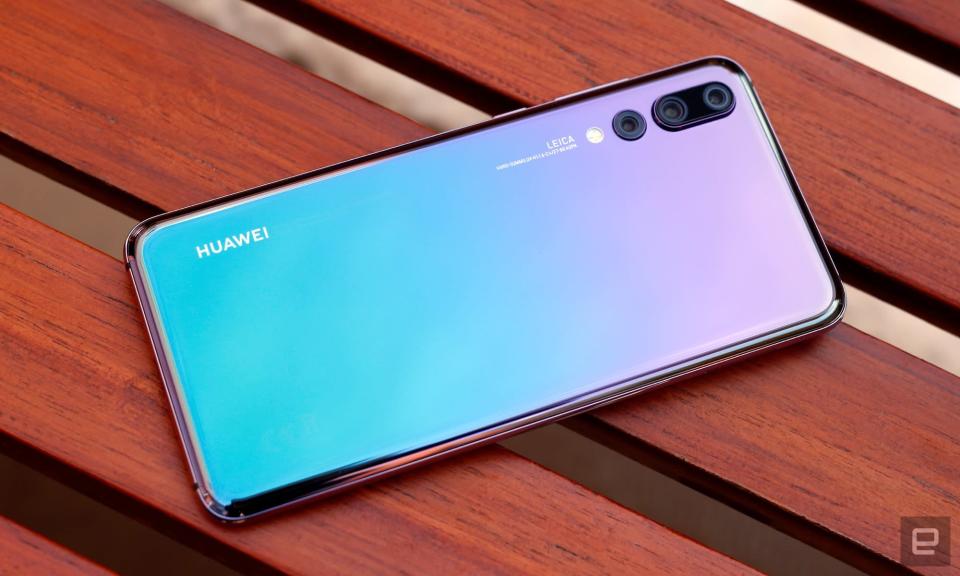
Hardware
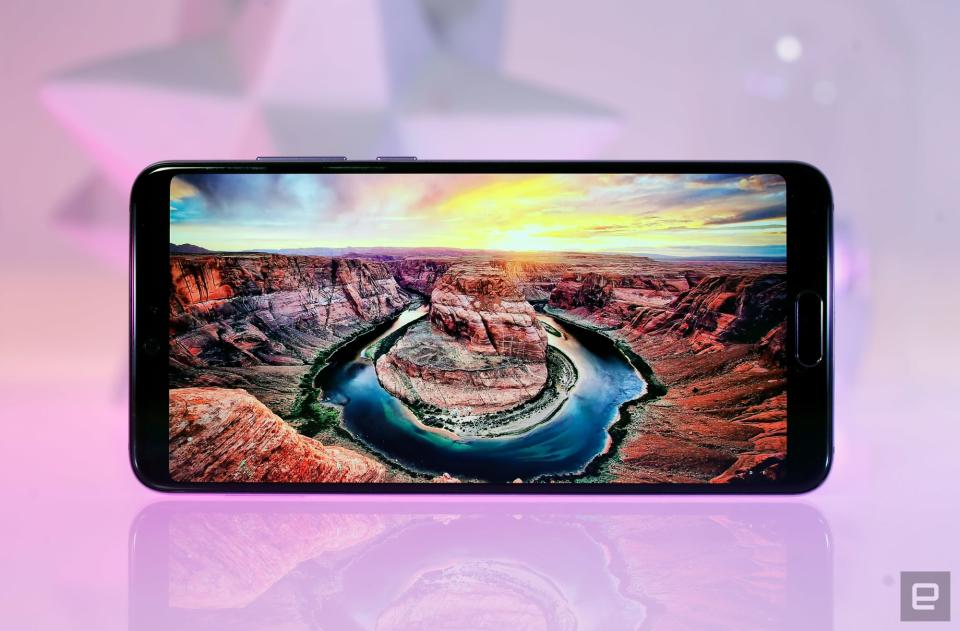
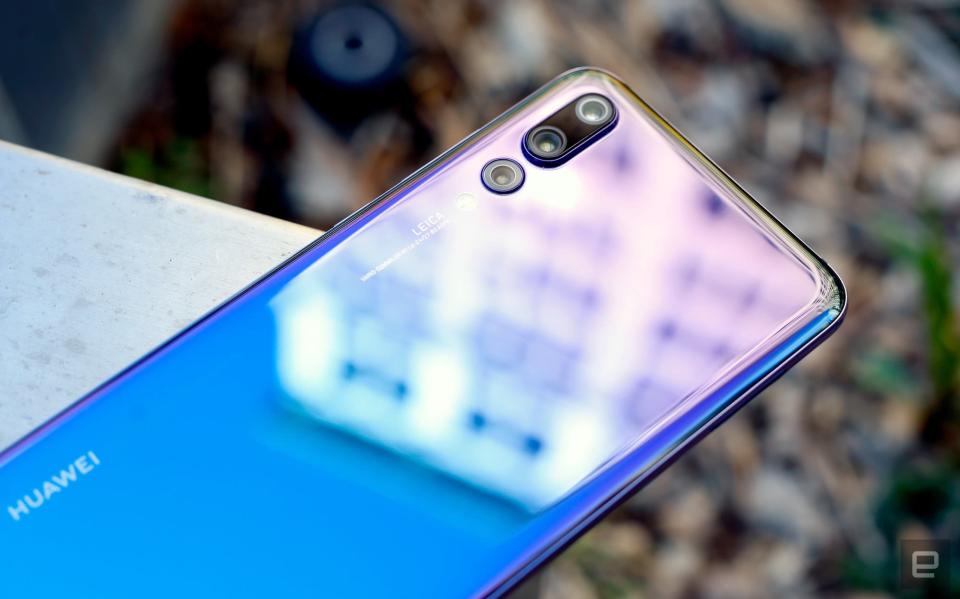
The cameras
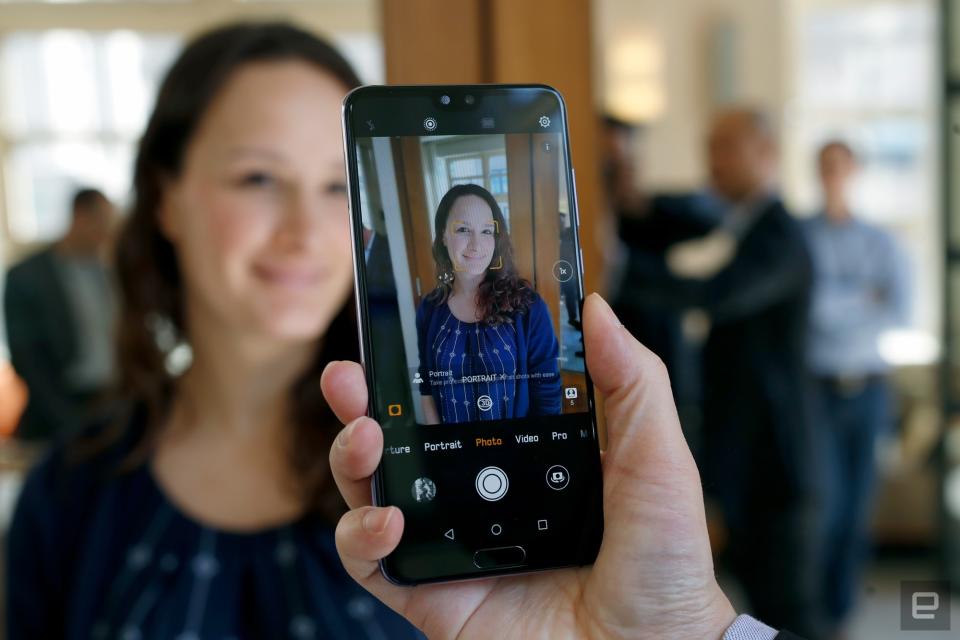

Performance and battery
